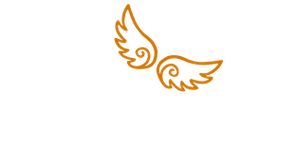The 1976 European Convention for the Protection of Animals kept for Farming Purposes does not contain an enforcement mechanism. At EU level, a directive obliges Member States to achieve a specific result, but it does not contain legislation on how to achieve these objectives. As a result, Member States have some flexibility to decide on their own legislation in order to achieve the desired results. In contrast, a regulation is a binding piece of legislation that is directly applicable throughout the EU. • In addition, Sweden is exemplary in banning the use of poultry houses for sows, farrowing tanks and tail hips, as well as the castration of piglets and other mutilations without anesthesia. Other countries are invited to adopt similar legislation. Animals may be used for scientific research or education, diagnosis of diseases, manufacture of medicinal products or chemical products or for similar purposes only if: 3. The Government or the authority designated by it may make other regulations or, in individual cases, make decisions governing the duties of supervisors and veterinarians and the training and competence of personnel. In a 2015 opinion poll, 78% of Sweden`s 1,000 respondents (and 85% under 30) said “no” to “Do you think it should be allowed to raise mink in cages for fur production?” [9] The Regulation stipulates that wild animals that can be kept as pets must be kept in zoos, etc., in accordance with the space and enrichment requirements according to the Regulation (SJVFS 2019:29) on breeding in zoos, etc. Those who professionally care for these animals must have completed basic training in animal care and one or more specialized training courses focused on the species with which they trade. Courses must be taught by the Swedish Board of Agriculture. This category of animals is subject to the general anti-cruelty provision of chapter 16, section 13, of the Criminal Code.
Chapter 2 of the Animal Welfare Act 2018 contains general provisions on the welfare of all animals to which that Act applies, including farm animals. Article 1 provides that animals shall be well treated and protected against unnecessary suffering and disease. There are other special requirements that include issues such as adequate food and water, as well as adequate care (section 4) and sufficient space (section 5); Housing animals in an environment that promotes their health and allows for natural behaviour (Section 2). Other provisions of the Act provide for veterinary treatment and euthanasia if necessary (Chapter 4, Section 3) and prohibit animals from undergoing surgery or injections unless necessary for veterinary reasons (Chapter 4, Section 2). *Important: The following rules apply to dogs, cats and ferrets. Other animals may require special requirements. Some companies let their employees bring their dogs to the office. You can also leave your pet in a dog daycare (although they are quite expensive) or hire a pet sitter. Your pet will receive the extra love and care it deserves. There are also more detailed regulations on the control of dogs and cats, which are decided by the Ministry of Agriculture. Section 1 of that regulation (2007:1150) on the supervision of dogs and cats describes that dogs and cats may be cared for in a manner which, having regard to their nature and other circumstances, is necessary to prevent them from causing significant injury or inconvenience.
Section 2 requires the registration of dogs. Article 15 warns that anyone who has not already properly cared for a dog may be prohibited from obtaining another dog. Ban on elephants and sea lions in circuses Amendment The regulations of the Swedish Board of Agriculture (SJVFS 2019:9) and the General Advice on Laboratory Animals contain detailed provisions on the use of animals for experimental purposes, many of which are aimed at animal welfare and the prevention of suffering. In addition, the Animal Welfare Act, 2018 requires all producers, suppliers and users of laboratory animals to have an animal welfare office. These animal welfare organizations differ from animal ethics committees. Each animal welfare organisation must be composed of at least one veterinarian, one researcher assigned to the handling of animals in laboratories and one representative of the staff who care for animals. Among other things, the animal welfare organization provides advice on animal welfare, housing programs and the application of the three R principles. Since July 2018, these animal welfare organisations can decide on changes to existing ethical approvals of animal experiments at the request of the project leader, provided that the change does not affect animal welfare, the ability to achieve the purpose of the experiment and the housing, care or labelling methods requiring the approval of an animal ethics committee. In 2007, Sweden had the second highest milk consumption in the world after Finland. [5] Section 1 prohibits any person from causing unnecessary pain, suffering or distress or abandoning a pet.

